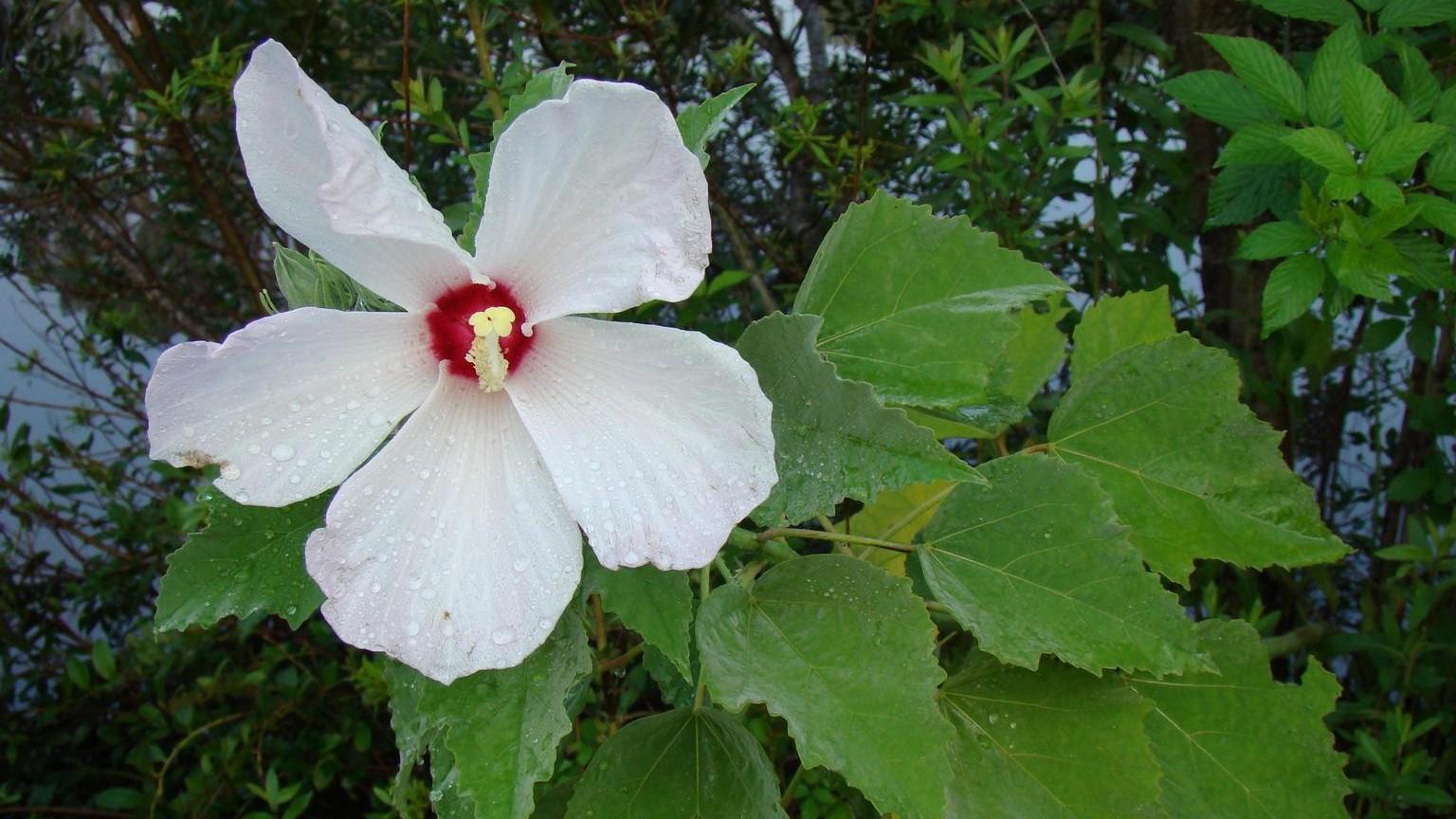About rosemallow
Hibiscus moscheutos
Shrub
Mallow Family
Maryland Distribution: Sunny, wet meadows, pond edges, fresh and brackish marshes
Height: 4-7 feet
Blooms: tropical-looking, white or pink with a dark red throat, July - September
Sun: full sun to part sun
Soil: wet to moist, coarse or loamy soils with organic matter
Garden Use & Maintenance: Despite their bushy habit, Maryland species are actually herbaceous. Like other perennial wildflowers, it may be divided when the clump becomes too large or if new plants are desired. In summer Japanese beetles, an alien invasive, may attack leaves and flowers, but this is uncommon and easily managed with a bucket of soapy water. In winter, the strong stems and interesting seed heads add structure to the garden, and are useful in dried arrangements. Some gardeners trim old stems back in late spring, once the new growth emerges. Use in hedges, wet meadows, shorelines, pollinator gardens, rain gardens, foundation beds.
Wildlife: Blossoms are pollinated by larger bees, especially our native Hibiscus Bees. They are also visited by hummingbirds and orioles. Rose Mallow is a host plant for many moth and butterfly species, most notably the Checkered Skipper.
